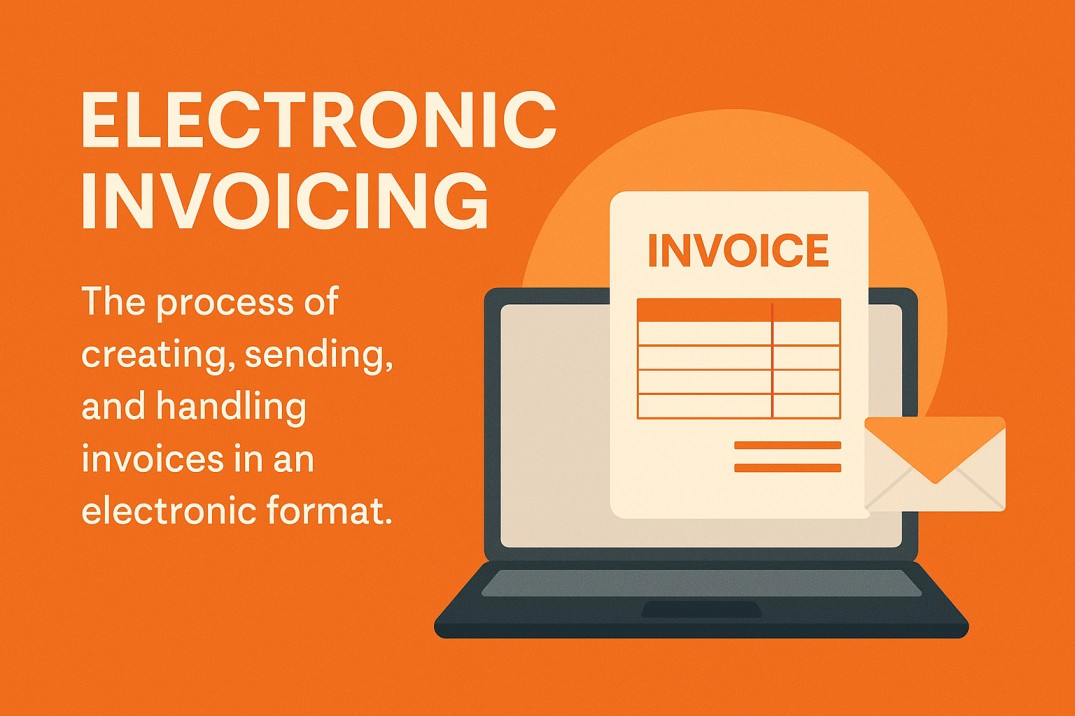Invoices are a vital component of any business transaction, acting as the key document of goods or services rendered and payments owed. But with the advent of digital technology, there is one big question on everyone’s mind: should businesses remain with paper invoices, or should they transition to electronic invoicing? This blog digs deep into how paper and e-invoicing differ, how they are good, and also the challenges facing both to ensure that you are making an educated decision that suits your business best.
What Is a Paper Invoice?
A paper invoice is the old-school method of billing. These are tangible documents, usually printed on paper, sent by mail or delivered in person to the customer. Paper invoices usually have a breakdown of the goods or services rendered, total cost, taxes incurred, and payment details. This ancient technique has been a business mainstay for decades.
From small enterprises to multinationals, paper invoicing is still used by most organizations, mainly in sectors or areas where technological adoption is not strong. Its practice goes back as far as the existence of commerce itself and is thus a tested and trusted practice.
What Is an Electronic Invoice (E-Invoice)?
Electronic invoicing (e-invoicing) has changed billing forever. Learn more about electronic invoice essentials. Instead of paper-based invoices, invoices are created and dispatched electronically, occasionally in the PDF, XML, or custom e-invoicing platforms that have standardized formats.
E-invoicing streamlines billing, which gets faster, leaner, and less manpower-heavy. It’s quickly becoming an international standard, as governments worldwide press its adoption to ensure accuracy and adherence in taxation reporting.

How Does Paper Invoicing Work?
The paper invoicing process is easy but has several steps. To begin with, the invoice is prepared manually by a person within the business using templates or simple software such as Excel. Printing the invoice is the second step, followed by physically sending it to the customer through mail or hand delivery.
After the client has been issued the invoice, they must process and pay it manually. After payment, the company makes an update in its records indicating the payment status. Although straightforward, the process is time-consuming, heavily dependent on manual intervention, and error-prone.
Pros and Cons of Paper Invoice
Pros
- Tangibility: Physical invoices on paper leave a tangible record, which is easier to trace or refer to for some individuals. They can be retained as physical copies for future purposes.
- Familiarity: Most companies are used to paper bills, particularly in sectors where digitalization has not yet gained traction.
- No Technology Dependence: Paper invoices do not need access to the internet, software, or technical expertise, making them easier for less technology-literate users or areas with poor technological infrastructure.
Cons
- Time-Consuming: From the printout to the mailing and payment processing, the whole process of paper invoicing consumes a lot of time.
- Exorbitant Expenses: Printer, paper, ink, postage, and storage charges add up, resulting in paper bills being much higher in the long term.
- Susceptible to Mistakes: Human mistakes in manual input, copying, or filing of paper documents can result in billing mistakes.
- Environmental Impact: Paper invoices increase environmental waste. Many businesses are shifting from paper to electronic invoicing.
- Storage Issues: Storage and keeping high amounts of paper invoices can be inconvenient and space-intensive.
How Does E-Invoice Work?
The e-invoicing process is effective and versatile. It is initiated with the creation of a digital invoice, most commonly from an invoicing application or an accounting software. Such electronic bills are programmable, automated, and saved centrally in a virtual storehouse.
Upon preparation, the invoice is presented directly to the recipient in electronic or in an electronic network manner. The recipient can also process and pay the invoice electronically. Payment status changes are usually registered automatically in the system, saving time and eliminating errors.
Pros and Cons of E-Invoice
Pros
- Quicker Processing: Automated payment and delivery tracking through electronic invoices dramatically accelerate the invoicing cycle.
- Cost-effective: Paperless, printing, postage, and storage elimination save businesses a massive amount of money.
- Eco-Friendly: As the world goes online, they help save trees and lower their carbon footprint.
- Minimized Errors: Digital systems tend to have features such as data validation and auto-calculations, minimizing the possibility of manual errors.
- Enhanced Security: Encrypted payment gateways and secure encryption safeguard invoice information, preventing theft and fraud.
- Access Anywhere, Anytime: Cloud platforms enable instant access, and therefore e-invoicing is most suitable for remote or work-from-home scenarios.
Cons
- Initial Setup Costs: Implementing an e-invoicing system could involve initial investment in software and training.
- Dependence on technology: Technical breakdown or internet disruption can actually lead to delays.
- Learning Curve: Companies that are new to digital tools can take time and effort to get used to the new system.

Differences Between Electronic and Paper Invoice
| Aspect | Paper Invoice | Electronic Invoice |
|---|---|---|
| Delivery Method | Physical (postal/mail delivery) | Digital (email/e-platform delivery) |
| Speed | Slower (multiple manual steps) | Faster (automated processes) |
| Cost | High (material and postage costs) | Low (minimal additional costs) |
| Error Rate | Higher due to manual input | Lower with automated validation |
| Accessibility | Requires physical storage access | Accessible via cloud systems |
| Environmental Impact | Negative (paper wastage) | Positive (reduces paper usage) |
Benefits of Electronic Invoices Over Paper Invoices
Though paper bills have their appeal, the advantages of being electronic are not easy to resist:
- Automation and Effectiveness: Automated workflows translate to fewer holdups, steady cash flow, and convenience in handling bulk bills.
- Real-time Monitoring: E-invoicing enables real-time tracking. Plus, with growing mobile payment trends, businesses are digitizing faster.
- Flexibility: Whilst it is daunting to handle thousands of paper bills, digital systems seamlessly deal with thousands.
- Compliance Support: Numerous nations require e-invoicing for tax reporting purposes; digital platforms tend to ensure compliance automatically.
- Integration Capabilities: E-invoices are integrated with accounting software and enhance overall financial management.
Final Thoughts
Both electronic and paper invoices are their own niche in business practices, but the balance seems to shift greatly in favor of e-invoicing based on efficiency, cost, and environmental concerns. Although heritage preserves paper invoices, an increasing demand for speed, internet integration, and ecological friendliness makes electronic invoicing a progressive decision for the majority of businesses.
Deciding between paper and digital invoices? Understand the move from paper vs electronic invoicing and make the right call for your future plans. But as the world moves toward the digital era, going electronic with invoicing may be the boost your business requires.
Create Invoices Instantly – Free & Easy!
Generate professional invoices in seconds with our Free Online Invoice Generator.
👉 Try the Invoice Generator Now

Leave a Reply